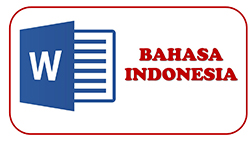Pengembangan Metode Pembelajaran Klasik Pendidikan Agama Islam Persfektif Imam Al-Ghazali untuk Siswa Inklusi
Abstract
This study aims to find out how the steps of inclusive students or with special needs learn and the development of classical learning methods from the perspective of Imam Al-Ghazali in Islamic Religious Education subjects for inclusive students and how effective the development of the classical learning method is. In this development using the R&D development method according to Smith and Regan, this development uses the R&D development method. In this development there is the development of Learning Context Analysis which includes an analysis of needs and environmental characteristics, Analysis of learning characteristics: 1) similarities and differences in learning. 2) Background of learning ability. 3) The implications of learning characteristics on learning design. Analysis of learning tasks: 1) Analysis of learning objectives. 2) Tasks. 3) Learning and learning strategies. 4) Types of learning. Performance appraisal: 1) The purpose of the assessment. 2) Assessment design. 3) Assessment model. The results of the research on the development of classical learning methods, with data collection conducting interviews and observations to teachers and testing classical learning methods on inclusive students. The results of this study are 50% to 60% of inclusive students are able to carry out classical learning methods in Islamic religious education subjects, although 70% of inclusive students are less able to balance learning like normal students and understand all the material presented by the teacher.
Downloads
References
Desintya fryda Lucyani, (2009), Pembelajaran pendidikan agama islam pada anak berkebutuhan khusus’, Journal Information, 10, (3), 1–16 .
Fatmawati, Endang. dkk. (2022). Pembelajaran Tematik. Yayasan Penerbit Muhammad Zaini
Hadi, R. (2017). Pembelajaran Pendidikan Agama Islam Pada Anak Berkebutuhan Khusus Autistik Di Sekolah Inklusi Sdn Benua Anyar Kota Banjarmasin. Tarbiyah Islamiyah, 7(2), 62–76.
Hasyim, Nisa’, R., & Fatria, N. N. (2022). Pengaruh Bimbingan Belajar Terhadap Hasil Belajar Peserta Didik Kelas IV. IBTIDA, 3(1), 28-37. https://doi.org/10.37850/ibtida.v3i1.286
Jannah, R. (2016). Strategi Pembelajran Agama Islam Pada Anak Berkebutuhan Khusus. In Sekolah menengah pertama Inklusi TPA Jember (Vol. 13, Issue May). Strategi Pembelajaran Agama Islam pada Anak Berkebutuhan Khusus di Sekolah Menengah Pertama Inklusi TPA Jember
James M. Kauffman Daniel P. Hallahan, (2001). Introduction to Special Education’, Professional Development, , 2–3.
Khairun Nisa, Sambira Mambela, and Luthfi Isni Badiah, (2018), ‘Karakteris’, Jurnal Abadimas Adi Buana, 2.1 33–40 https://doi.org/10.36456/abadimas.v2.i1.a1632.
Lucyani, D. fryda. (2009). Pembelajaran pendidikan agama islam pada anak berkebutuhan khusus Journal Information, 10(3), 1–16.
Prasetya, Z. (2017). Metode Fernald untuk meningkatkan kemampuan membaca pada anak disleksia. Jurnal Psikologi Universitas Muhammadiyah Malang, 1–84. http://eprints.umm.ac.id/43371/1/jiptummpp-gdl-zunustripr-47298-1-zunus20-6.pdf
Subchani, N. I. (2019). Perpustakaan IAIN Pekalongan Perpustakaan IAIN Pekalongan. In Jurnal Ekonomi Islam (Issue Marketing Mix). Pelaksanaan Pendidikan Agama Islam Bagi Siswa Berkebutuhan Khusus di Sekolah Inklusi
Ulya, S. H. (2019). Pembelajaran PAI Pada Pendidikan Inklusi. In Αγαη (Vol. 8, Issue 5). Pembelajaran PAI pada Pendidikan Inklusi di MTS Islamic Center Ngembalrejo Bae Kudus.
Yuzi, Y. (2000). ADLN - Perpustakaan Universitas Airlangga. 1–32. Panduan untuk Ibu Bapak Guru Konselor. Selangor





.png)










